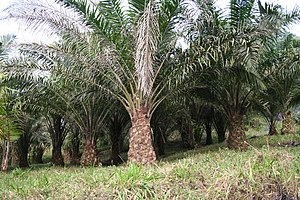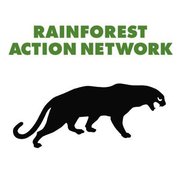Worst food additive ever - its in half of all food...
 Image via Wikipedia
Image via Wikipedia Image via Wikipedia
Image via Wikipedia Image via Wikipedia
Image via Wikipedia
On August 10, police and security for the
massive palm oil corporation Wilmar International (of which Archer Daniels
Midland is the second largest shareholder) stormed a small, indigenous
village on the Indonesian island of Sumatra. They came with bulldozers and
guns, destroying up to 70 homes, evicting 82 families, and arresting 18 people.
Then they blockaded the village, keeping the villagers in -- and journalists
out. (Wilmar claims it has done no wrong.)
The village, Suku Anak Dalam, was home to an
indigenous group that observes their own traditional system of land rights on
their ancestral land and, thus, lacks official legal titles to the land. This is
common among indigenous peoples around the world -- so common, in fact, that it
is protected by the United Nations
Declaration on the Rights of Indigenous Peoples.
Indonesia, for the record, voted
in favor of the Declaration on the Rights of Indigenous Peoples in 2007. Yet
the government routinely sells indigenous peoples' ancestral land to
corporations. Often the land sold is Indonesia's
lowland rainforest, a biologically rich area home to endangered species like
the orangutan, Asian elephant, Sumatran rhinoceros, Sumatran tiger, and the
plant Rafflesia arnoldii, which produces the world's largest
flower.
So why all this destruction? Chances are
you'll find the answer in your pantry. Or your refrigerator, your bathroom, or
even under your sink. The palm oil industry is one of the largest drivers of
deforestation in Indonesia. Palm oil and palm kernel oil, almost unheard of a
decade or two ago, are now unbelievably found in half of all packaged
foods in the grocery store (as well as body care and cleaning supplies). These
oils, traditional in West Africa, now come overwhelmingly from Indonesia and
Malaysia. They cause jawdropping amounts of deforestation (and with it, carbon
emissions) and human rights abuses.
"The recipe for palm oil expansion is cheap
land, cheap labor, and a corrupt government, and unfortunately Indonesia fits
that bill," says Ashley Schaeffer of Rainforest Action Network.
The African oil palm provides two different
oils with different properties: palm oil and palm kernel oil. Palm oil is made
from the fruit of the tree, and palm kernel oil comes from the seed, or "nut,"
inside the fruit. You can find it on ingredient lists under a number of names,
including palmitate, palmate, sodium laureth sulphate, sodium lauryl sulphate,
glyceryl stearate, or stearic acid. Palm oil even turns up in so-called
"natural," "healthy," or even "cruelty-free" products, like Earth Balance (vegan
margarine) or Newman-O's organic Oreo-like cookies. Palm oil is also used in
"renewable" biofuels.
A hectare of land (2.47 acres) produces, on
average, 3.7 metric tons of palm oil, 0.4 metric tons of palm kernel oil, and
0.6 tons of palm kernel cake. (Palm kernel cake is used as animal feed.) In
2009, Indonesia produced over 20.5 million metric tons, and Malaysia produced
over 17.5 million metric tons. As of 2009, the U.S. was only the seventh largest
importer of palm oil in the world, but as the second largest importer of palm
kernel oil, it ranks third in the world as a driver of deforestation for palm
oil plantations.
Indonesia has lost 46 percent of its forests
since 1950, and the forests have recently disappeared at a rate of about 1.5
million hectares (an area larger than the state of Connecticut) per year. Of the
103.3 million hectares of remaining forests in 2000, only 88.2 million remained
in 2009. At that time, an estimated 7.3
million hectares of oil palm plantations were already established, mostly on
the islands of Sumatra and Borneo. Indonesia plans to continue the palm oil
expansion, hoping to produce an additional 8.3 million metric tons by 2015 --
this means a 71 percent expansion in area devoted to palm oil in the coming
years.



0 Comments:
Post a Comment
Subscribe to Post Comments [Atom]
<< Home